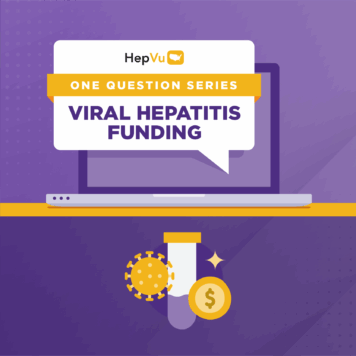Original piece published on Stat News.
By:
April 17, 2024
Before the Covid-19 pandemic, viral hepatitis killed more people in the United States than all 60 other reportable infectious diseases combined, including HIV, pneumonia, and tuberculosis. Which doesn’t really make sense, since effective vaccines are available for hepatitis A and B, there are successful therapies for hepatitis B, and there’s a treatment that can cure hepatitis C.
By all accounts, the U.S. should be able to eliminate viral hepatitis, but instead new cases are on the rise, largely due to the opioid epidemic and increasing viral hepatitis transmission through injection drug use.
What’s stopping the country from tackling this deadly public health threat?
To fight infectious diseases, public health departments conduct what’s known as surveillance — the practice of collecting data on how many people have a disease, the characteristics of those who have a disease, and who is at an increased risk of acquiring the disease. Surveillance data also reveals if there are substantial inequities in care and treatment by race, ethnicity, age, or other characteristics.
Surveillance data are essential to guide cost-effective, equitable strategies for preventing and treating infectious diseases. Yet when it comes to hepatitis C, which is estimated to affect up to 4 million people in the U.S., the country’s current surveillance systems are not adequate for providing even the most basic information about how many people are infected or at risk for infection.
According to a recent report by Emory University’s HepVu Project, which I lead, and NASTAD (the National Alliance of State & Territorial AIDS Directors), many public health departments across the country lack the capacity to collect data for measuring state and local burdens of viral hepatitis infections.
The HepVu/NASTAD report found that 20% of jurisdictions did not have dedicated staffing to conduct routine surveillance activities for viral hepatitis, and about one-third were not able to produce annual viral hepatitis surveillance summaries — which inform funding priorities — including basic descriptions of how many people have viral hepatitis in a city or state. Only 3% of jurisdictions said they could make progress toward eliminating viral hepatitis with current federal resources.
Viral hepatitis, particularly hepatitis C, disproportionately affects communities of color, people who are incarcerated, people who inject drugs, people living with HIV, people experiencing homelessness, and adults over age 60 with risk factors like prior injection drug use or blood transfusions before 1992. But without robust surveillance systems, it will be impossible to understand the systemic inequities in viral hepatitis infections and adverse outcomes; track changes in the epidemic in a timely way; and ultimately eliminate viral hepatitis in the U.S.
Investments in surveillance improve health and save money in the long run. The U.S. currently spends about 15 times as much on HIV prevention and surveillance as it does on viral hepatitis. Using information from robust HIV surveillance systems, public health departments have implemented effective programmatic planning and resource allocation that has helped make significant strides in the fight against HIV. As a result, there has been a decline in new HIV infections and an increase in the number of people who are receiving HIV care and treatment.
In 2023, the Biden Administration announced an unprecedented effort to end hepatitis C nationwide — which is defined as a 90% reduction in new infections and a 65% reduction in viral hepatitis-related deaths — by 2030. Without funding for robust surveillance, many jurisdictions will not have the data they need to work toward these national elimination goals and to monitor local progress along the way.
President Biden’s budget request for 2025 included $9.4 billion to eliminate hepatitis C infections in this country, which would save the federal government more than $13 billion over 10 years, and more into the future. U.S. Senators Chris Van Hollen (D-Md.) and Bill Cassidy (R-La.) are working on bipartisan legislation to eliminate viral hepatitis, which must include funding a comprehensive viral hepatitis surveillance system to allow public health departments to implement effective responses, allocate funding where it’s needed most, and measure results.
It’s hard to reach a destination without a map. For guiding cost-effective, equitable investments in eliminating viral hepatitis, robust surveillance data provide that map.
Heather Bradley, Ph.D., is an associate professor in the Department of Epidemiology at Emory University Rollins School of Public Health in Atlanta, GA, and the project director of HepVu.



